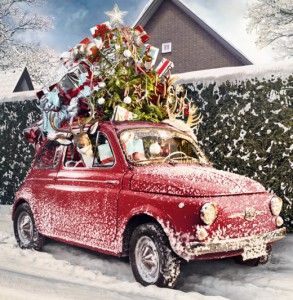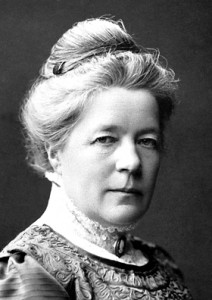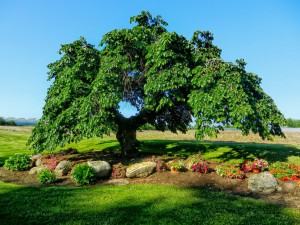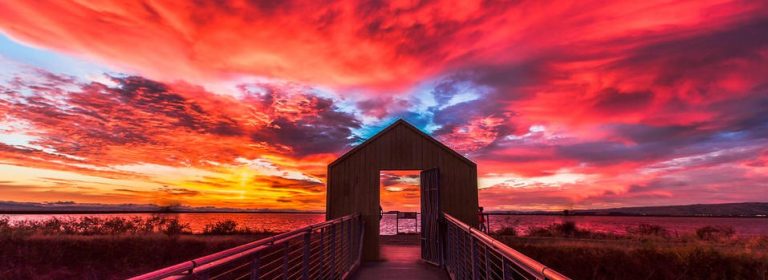
这一年的耶诞节,富家子弟彼得从他哥哥那里得到了一辆作为耶诞节礼物的新车。一天,彼得看到一名男孩正在他那辆闪闪发亮的新车旁走来走去,并时不时地触摸它,满脸羡慕的神情。
彼得饶有兴趣地看着这个小男孩,从他的衣着来看,他的家庭很一般,就在这时,小男孩抬起头问到:“先生,这是你的车吗?”
“是啊,”彼得说,“我哥哥给我的圣诞礼物。”
小男孩睁大了眼睛:“你是说,这是你哥哥给你的,而你不用花一分钱?”
彼得点点头。
小男孩说:“哇!我希望……”
彼得以为小男孩希望自己也有这样的哥哥,但小男孩说出的却是:“我希望自己也能当这样的哥哥。”
彼得深受感动的看着这个小男孩,然后他问:“要不要坐我的新车去兜风?”小男孩惊喜万分地答应了。
逛了一会之后,小男孩转身向彼得说:“先生,能不能麻烦你把车开到我家前面?”
彼得微微一笑,他理解小男孩的想法:“坐一辆大而漂亮的车子回家,在小朋友面前是很神气的事,但他又想错了。
“麻烦你停在两个台阶那里,等我一下好吗?”
小男孩跳下车,跑回家,不一会儿他出来了,并带着一个显然是他弟弟的小孩,他因患小儿麻痹而跛著一只脚,他把弟弟安置在下边的台阶上,自己紧靠着坐下,然后指著彼得的车子说:
“看见了吗?这是他哥哥送给他的圣诞礼物,他不用花一分钱!将来有一天我也要送你一部和这一样的车子,这样你就可以看到我一直跟你讲的橱窗里那些好看的圣诞礼物了。”
彼得的眼睛湿润了,他走下车子,将小弟弟抱到车子的前排座位上,他的哥哥眼睛里闪著喜悦的光芒,也爬了上来。于是,三人开始了一次令人难忘的短途旅程。
在这个耶诞节,彼得明白了一个道理:施比受有福
Month: December 2015
第一位荣获诺贝尔文学奖的女性
 1858年,瑞典的一个富豪人家生下了一个女儿。然而不久,孩子染患了一种无法解释的瘫痪症,丧失了走路的能力。
1858年,瑞典的一个富豪人家生下了一个女儿。然而不久,孩子染患了一种无法解释的瘫痪症,丧失了走路的能力。
一次,女孩和家人一起乘船旅行。船长的太太给孩子讲船长有一只天堂鸟,她被这只鸟的描述迷住了,极想亲自看一看。于是保姆把孩子留在甲板上,自己去找船长。
孩子耐不住性子等待,她要求船上的服务生立即带她去看天堂鸟。那服务生并不知道她的腿不能走路,而只顾带着她一道去看那只美丽的小鸟。奇迹发生了,孩子因为过度地渴望,竟忘我地拉住服务生的手,慢慢地走了起来。从此,孩子的病便痊愈了。
女孩子长大后,又忘我地投入到文学创作中,最后成为第一位荣获诺贝尔文学奖的女性,也就是茜尔玛拉格萝芙。 (Selma Lagerlöf)
忘我是走向成功的一条捷径,只有在这种环境中,人才会超越自身的束缚,释放出最大的能量。
榆树的伤痕
 有一个农场主为了方便拴牛,在庄园的一棵榆树上箍了一个铁圈。
有一个农场主为了方便拴牛,在庄园的一棵榆树上箍了一个铁圈。
随着榆树的长大,铁圈慢慢嵌进了树身,榆树的表皮留下一道深深的伤痕。
有一年,当地发生了一种奇怪的植物真菌疫病,方圆几十公里的榆树全部死亡,唯独那颗箍了铁圈的榆树却存活下来。
为什么这棵榆树能幸存呢?植物学家对此产生了兴趣,于是组织人员进行研究。结果发现,正是那个给榆树带来伤痕的铁圈拯救了它。因为从锈蚀的铁圈里吸收了大量铁份,所以榆树才对真菌产生了特殊的免疫力。
这是一个真实的故事,发生在上世纪五十年代美国的一个农场里。这棵树至今仍生长在美国密歇根州比犹拉县附近的那个农场里,充满生机和活力。
不仅是树,人也是如此。我们也许在生命中受过各种各样的伤害,但这些伤害又成为生命的一道养料,让生命变得更刚毅,更坚强,更充满生机、活力和希望。同时也让伤害成为一个警醒,让我们及时从迷惑中解脱。
没有人会无缘无故在你生命中出现。每一个在你生命里出现的人,都有甚深的因缘。爱你的人给了你感动,你爱的人让你学会奉献,你不喜欢的人教会你宽容与接纳,不喜欢你的人,促使你自省与成长。所以,如果你曾受过伤害,请感谢那些你认为伤害了你的人。
在人生的修行中,让我们接纳一切因缘,无论是顺缘,还是逆缘,都是我们必修的功课。让我们随缘、惜缘、了缘,历境炼心,自在而行。
Po Bronson, in his book WHY DO I LOVE THESE PEOPLE? (Random House, 2005), tells a true story about a magnificent elm tree. The tree was planted in the first half of the 20th Century on a farm near Beulah, Michigan (USA). It grew to be a magnificent tree.
In the 1950s, the family that owned the farm kept a bull chained to the elm. The bull paced around the tree, dragging a heavy iron chain with him, which scraped a trench in the bark about three feet off ground. The trench deepened over the years, though for whatever reason, did not kill the tree.
After some years, the family sold the farm and took their bull. They cut the chain, leaving the loop around the tree and one link hanging down. Over the years, bark slowly covered the rusting chain.
Then one year, agricultural catastrophe struck Michigan in the form of Dutch Elm Disease. It left a path of death across vast areas. All of the elms lining the road leading to the farm became infected and died. Everyone figured that old, stately elm would be next. There was no way the tree could last, between the encroaching fungus and its chain belt strangling its trunk.
The farm's owners considered doing the safe thing: pulling it out and chopping it up into firewood before it died and blew over onto the barn in a windstorm. But they simply could not bring themselves to do it. It was as if the old tree had become a family friend. So they decided to let nature take its course.
Amazingly, the tree did not die. Year after year it thrived. Nobody could understand why it was the only elm still standing in the county!
Plant pathologists from Michigan State University came out to observe the tree. They observed the scar left by the iron chain, now almost completely covered by bark and badly corroded.
The plant experts decided that it was the chain that saved the elm's life. They reasoned that the tree must have absorbed so much iron from the rusting chain, that it became immune to the fungus.
It's said that what doesn't kill you will make you stronger. Or, as Ernest Hemingway put it, "Life breaks us all, but afterwards, many of us are strongest at the broken places."
The next time you're in Beulah, Michigan, look for that beautiful elm. It spans 60 feet across its lush, green crown. The trunk is about 12 feet in circumference.
Look for the wound made by the chain. It serves as a reminder that because of our wounds, we can have hope! Our wounds can give us resources we need to cope and survive. They can truly make us strong.
